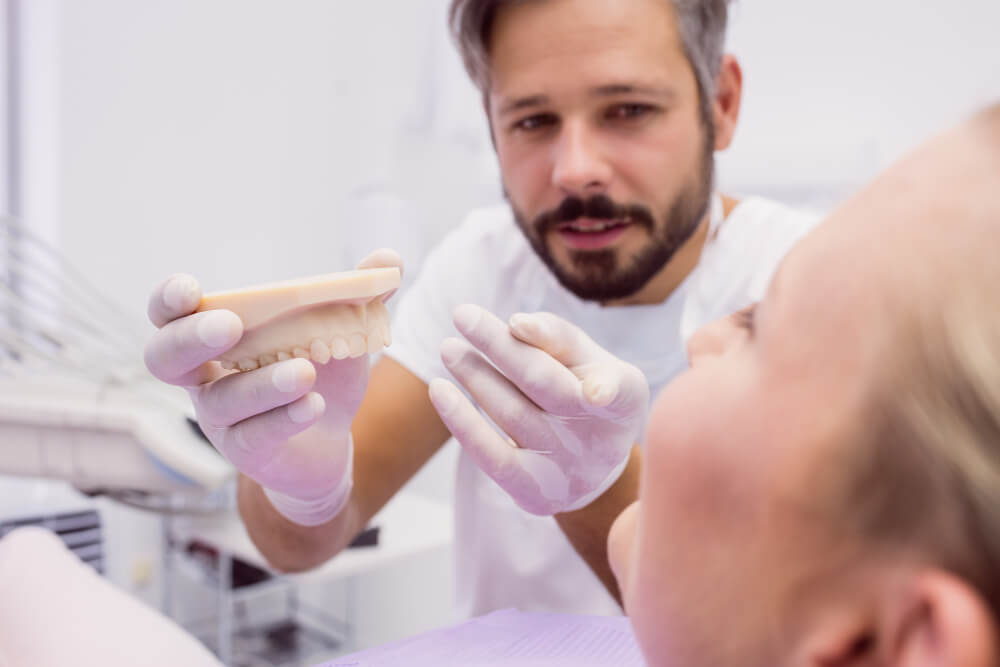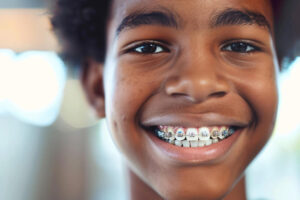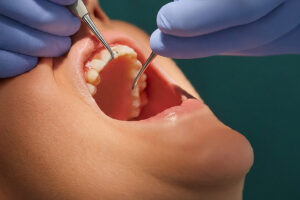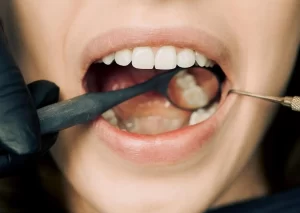Things to Avoid after Tooth Extraction

Tooth extraction is a common dental procedure that involves the removal of a tooth from its socket in the jawbone. While it’s often a straightforward process, the recovery period is crucial for ensuring proper healing and avoiding complications.
After an extraction, your mouth is vulnerable, and certain activities can disrupt the healing process, leading to pain, infection, or other unwanted outcomes.
In this article, we’ll explore the key things to avoid after tooth extraction, offering insights and advice to help you navigate the recovery period smoothly.
Table of Contents
What foods to avoid after tooth extraction?
After a tooth extraction, avoid certain foods to prevent irritation, infection, or damage to the extraction site.
Here’s a list of foods to steer clear of during the initial healing period:
Crunchy and Hard Foods
Foods like nuts, chips, hard bread, and popcorn are difficult to chew and can exert pressure on the healing socket. Small particles from these foods can also become lodged in the extraction site, leading to irritation or infection.
Sticky and Chewy Foods
Chewing gum, caramel, and taffy can stick to and even pull on the extraction site, which might dislodge the blood clot that’s essential for healing. This clot acts as a protective layer over the underlying bone and nerves, and its removal can lead to complications such as dry socket, a painful condition that can delay healing.
Spicy Foods
Spices can irritate the extraction site, causing discomfort and potentially leading to inflammation. During the healing process, it’s best to avoid foods that can cause any form of irritation to the sensitive tissues.
Very Hot Foods and Liquids
Consuming foods and liquids that are too hot can increase the risk of dissolving the protective blood clot at the extraction site. Allow hot beverages and foods to cool down to a warm or room temperature before consuming.
Alcoholic Beverages
Alcohol can interfere with the healing process in several ways. It can dry out the mouth, decrease blood clotting, and interact negatively with any prescribed medications, such as antibiotics or pain relievers, potentially reducing their effectiveness and delaying recovery.
Acidic Foods and Beverages
Foods and drinks with high acidity, such as citrus fruits, tomatoes, and some juices, can irritate the wound, causing pain and discomfort. The acidic environment can also hinder the healing process by aggravating the sensitive tissues around the extraction site.
Hard Fruits and Vegetables
While fruits and vegetables are an essential part of a healthy diet, hard, raw varieties like carrots, apples, and celery can be difficult to chew and may put undue pressure on the healing site. Consume these foods in a softer form, such as applesauce or steamed vegetables, during the initial recovery period.
Read more: Why No Dairy after Tooth Extraction
What other things to avoid, besides food, after a tooth extraction?
Besides food restrictions, there are several other precautions to take after a tooth extraction to ensure a smooth and speedy recovery. Avoiding certain activities and habits is crucial to prevent complications such as infection, delayed healing, or dislodging of the blood clot. Here are key things to avoid:
Smoking and Tobacco Use
Smoking can significantly delay the healing process by reducing blood flow to the extraction site, increasing the risk of infection, and promoting dry socket. Tobacco products should be avoided for at least 48-72 hours after extraction, though longer is better for healing.
Sucking Actions
Avoid any sucking actions, such as using a straw, as this can dislodge the blood clot from the socket, leading to dry socket. This condition is not only painful but can also delay healing.
Rinsing Your Mouth Vigorously
While keeping your mouth clean after an extraction is important, vigorous rinsing can disturb the blood clot. It’s usually recommended to avoid rinsing your mouth for the first 24 hours. After that, gentle rinsing with warm salt water is often advised.
Physical Activity
Engaging in heavy physical activity or exercise immediately after an extraction can increase bleeding and swelling at the extraction site. It’s advisable to rest and limit activities for the first 24-48 hours to allow your body to start the healing process.
Poking or Prodding the Extraction Site
Avoid touching, poking, or prodding the extraction site with your tongue, fingers, or any objects. This can irritate the area, lead to infection, or dislodge the blood clot.
Using a CPAP Machine
It is generally not recommended to use your CPAP machine after a tooth extraction. The suction from the mask can dislodge the blood clot that forms at the extraction site, which can lead to a painful condition called dry socket. If you develop dry socket, you will need to see your dentist for treatment.
Read more: Will CPAP Cause Dry Socket?
Ignoring Post-Extraction Instructions
Your dentist or oral surgeon will provide specific post-extraction care instructions tailored to your situation. Ignoring these instructions can lead to complications, so it’s crucial to follow them closely.
By adhering to these guidelines, along with any personalized advice from your dental professional, you can help ensure a complication-free recovery following a tooth extraction.
10 Tips for a Faster Recovery
To ensure a faster and smoother recovery after a tooth extraction, it’s important to follow a comprehensive care routine.
Here are some effective tips to aid in your recovery process:
- Follow Your Dentist’s Instructions: Adhering to the aftercare instructions provided by your dentist or oral surgeon is the key to recovery. These guidelines are tailored to your specific situation and are designed to minimize discomfort and accelerate healing.
- Apply Ice Packs: To reduce swelling and bruising, apply an ice pack to the cheek area over the extraction site for 10 minutes on, then 10 minutes off, during the first 24 hours after the procedure. This can help manage inflammation and pain.
- Take Prescribed Medications: If your dentist prescribes antibiotics or pain relievers, take them as directed. Antibiotics help prevent infection, while pain relievers can alleviate discomfort during the initial recovery phase.
- Rest: Give your body the rest it needs to heal. Try to limit physical activity for the first 24-48 hours to reduce bleeding and swelling. When lying down, prop your head with pillows to elevate it above your heart, which can also help reduce swelling.
- Maintain Oral Hygiene: Keeping your mouth clean is essential for preventing infection. After the first 24 hours, gently rinse your mouth with warm salt water (1/2 teaspoon of salt in a cup of water) after meals and before bed. Avoid brushing directly at the extraction site for the first few days, but continue to brush and floss your other teeth as usual.
- Eat Soft Foods: Stick to a diet of soft, nutritious foods and liquids for the first few days. Foods like yogurt, pudding, soup, and applesauce can provide nourishment without irritating the extraction site. Gradually reintroduce solid foods into your diet as healing progresses.
- Stay Hydrated: Drink plenty of water to stay hydrated, but avoid using a straw as the sucking motion can dislodge the blood clot.
- Avoid Tobacco and Alcohol: Smoking and consuming alcohol can hinder the healing process. Tobacco use can increase the risk of complications, while alcohol can interfere with any prescribed medications.
- Monitor for Complications: Keep an eye out for signs of infection or other complications, such as persistent pain, swelling, fever, or unusual discharge from the extraction site. If you notice any of these symptoms, contact your dentist immediately.
- Attend Follow-Up Appointments: If your dentist schedules follow-up appointments, be sure to attend. These visits allow your dentist to monitor your healing and address any concerns.
FAQ on Things to avoid after a tooth extraction
What is not allowed after tooth extraction?
After tooth extraction, avoid smoking, using straws, consuming hard, crunchy, or sticky foods, engaging in vigorous physical activity, drinking hot or alcoholic beverages, and neglecting oral hygiene. It’s also important to avoid poking the extraction site and ignoring your dentist’s aftercare instructions to prevent complications like infection or dry socket and ensure a smooth recovery.
What are do’s and don’ts after tooth extraction?
Do’s:
– Rest and limit physical activity.
– Eat soft, nutritious foods.
– Use ice packs to reduce swelling.
– Keep your head elevated.
– Follow oral hygiene gently, avoiding the extraction site initially.
– Take prescribed medications as directed.
Don’ts:
– Avoid smoking and tobacco use.
– Steer clear of using straws.
– Don’t eat hard, crunchy, or sticky foods.
– Avoid vigorous exercise for a few days.
– Stay away from hot and alcoholic beverages.
– Don’t poke or disturb the extraction site.
How long after a tooth extraction can I eat?
You can eat soft foods approximately 2 hours after a tooth extraction, once the local anesthetic wears off and you can do so without discomfort. Avoid hot foods and beverages initially, and choose foods that require minimal chewing, such as yogurt, pudding, or soup, to prevent disturbing the extraction site.
How many days should I rest after tooth extraction?
It’s recommended to rest and limit physical activity for at least 24-48 hours after a tooth extraction to allow the initial healing process to begin effectively. Depending on the complexity of the extraction and your personal healing rate, you may need to modify your activities for a few more days.
Fact Checked
Our dedicated team rigorously evaluates every article and guide to ensure the information is factual, up-to-date, and free of bias.
Updated Regularly
We update our articles and reviews regularly to ensure you have access to the latest data in the dental industry.
The content on Dental3DU’s blog is intended for educational purposes only. This information should not be relied upon as professional medical counsel. Be sure to always consult with your dentist about the dangers and benefits of any medication, treatment or procedure.







